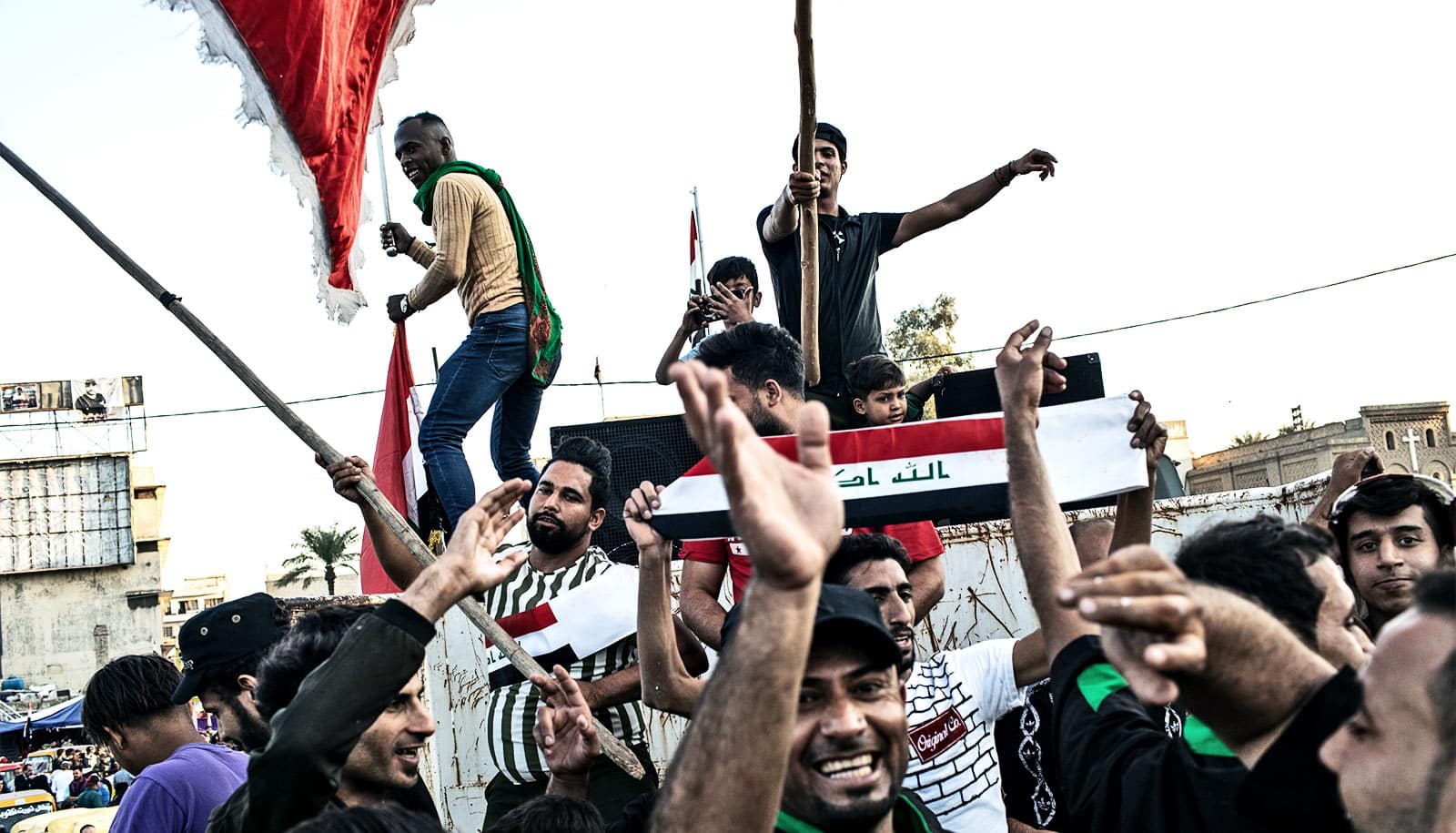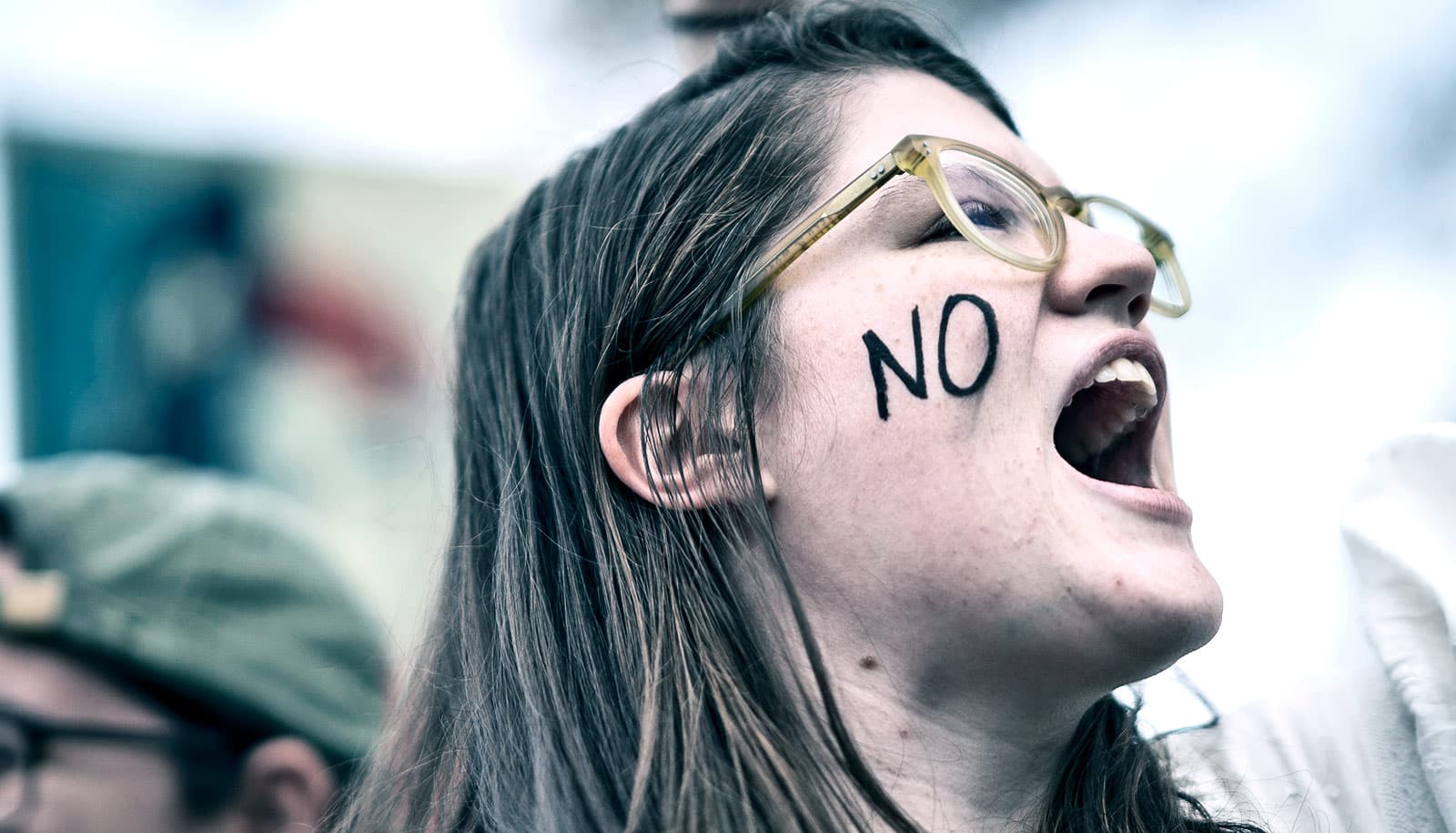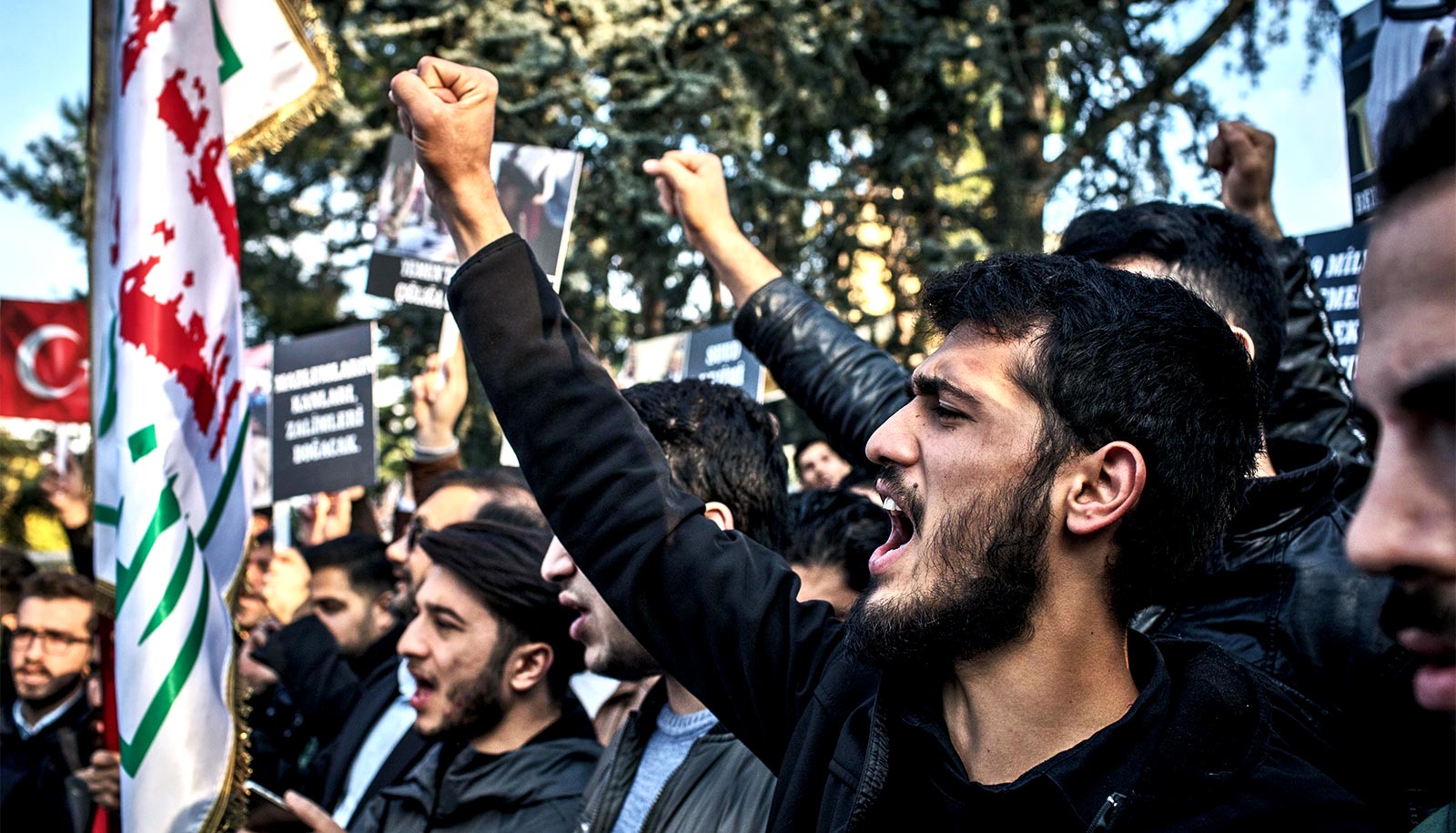Protests erupted in the streets in Iraq in September and have persisted on a daily basis since. But who are the protestors—and what do they want?
Estimates suggest there have been hundreds of deaths and thousands of injuries related to attempts to put down the protestors down.
Here, David Siddhartha Patel, associate director for research at the Crown Center for Middle East Studies at Brandeis University and author of the forthcoming book Order Out of Chaos: Islam, Information, and Social Order in Iraq (forthcoming from Cornell University Press), explains what’s going on:
Who are the protestors?
The protesters are mostly young—students, unemployed, or underemployed—Iraqis who are dissatisfied with services and opportunities in the country.
They haven’t formally organized, and the protests are not dominated by any particular political groups. It is leaderless, in that sense, and very informal, often groups of friends, schoolmates, and neighborhood groups.
Where are they?
The protests this year have occurred throughout much of the country, but notably centered in Baghdad around Tahrir Square. This differs from the protests last year that started in the south, in Basrah.
The government was able to crack down on those protests and developed a set of techniques to basically prevent Basrah from rising again. The government hasn’t, to this point, been able to implement the same security strategies in Baghdad that they did in Basrah.
Iraq had large protests in 2011, 2015, 2018, and 2019. What’s different about this year is those earlier protests tended to be over the summer, when electricity demand spikes, when it’s extraordinarily hot, when crises related to water come to prominence.
What are they protesting?
The short-term spark that set the protests off was the demotion of a prominent commander in the Iraqi Counter-Terrorism Service, or Golden Division, Abdel-Wahab al-Saadi.
He was told to take a desk job in the Ministry of Defense and refused to do so, and there was a perception that he was removed for nepotistic purposes. But this was just the spark.
There are three key underlying factors to the protests in Iraq:
Number 1: The Iraqi political system is extremely corrupt.
Iraqis have a political system called the Muhasasa system. The system was initially about the apportionment of government ministries and jobs between Sunni Arabs, Kurds, and Shia.
Over time, it has become more of a party-based, unity government system. After each election, the parties, and all the parties have to be included, get together to decide which parties get to appoint which upper- and mid-level civil servants.
They get to appoint those senior level positions, who then run contracts and jobs in the ministries they control through their party. These jobs and contracts are extremely important, as government employment is the majority of employment in Iraq.
If you look at any international indices on corruption, such as the Corruption Perceptions Index by Transparency International, corruption in Iraq is off the charts. It’s right down there with South Sudan and North Korea.
The protests aren’t against the prime minister; they’re against the political system and the political elites that have gotten rich and dominate the system.
Number 2: Iraq’s population is really, really young.
Forty percent of Iraqis have been born since the US invaded. A majority of Iraqis do not remember life under Saddam Hussein. So, it’s an extremely young population.
The only Arab populations that compare to it are the Palestinian territories and Yemen. All they know is this post-2003 political system that the Americans brought into power and has been dominated by this extremely corrupt political elite.
Number 3: The price of oil.
Iraq’s entire political system was baked at a time of historically high oil prices. Iraqis after Saddam Hussein started governing themselves when the price of oil was around $100 per barrel. The political system that exists after Saddam was formed during a period of historically high oil prices. It was flush with cash.
The payroll rapidly expands and these parties who are controlling the ministries are hiring tons of their own supporters or people who pay them bribes.
Then, in 2015 the price of oil crashes and goes flat, and they are not prepared for it. These guys have no experience with low oil prices. They institute a hiring freeze in 2016. Suddenly, there’s much less to go around. And it’s the youth who bear the brunt of that. The young people are the ones who have borne the brunt of austerity.
What do they want?
They want good services, they want clean water, they want electricity, they want sewage that works. Then they want an end to the hiring freeze. The prime minister recently announced a lift on the hiring freeze and an addition of 50,000 new jobs.
Whether this is enough to decrease the size of the protests remains to be seen.
Also, for a lot of the protesters this is about decreasing foreign interference in Iraq. And that means both American and Iranian interference and influence. And that’s very threatening to Iran.
What is the role of violence in the protests?
There’s been persistent violence in Iraq. Things are much better now than they were a couple years ago under ISIS, but the Iraqi government has used an awful lot of violence against protesters.
The protests this year, the numbers are just estimates, but there are maybe 350 dead, maybe 5,000 injured. That’s a lot of people compared to anywhere else, even compared to what happened recently in Iran.
There’s a lot of violence in trying to put down these protests. And a lot of the violence—we don’t know how much, but quite a bit of the violence—is being perpetrated by groups linked to Iran, whether or not they’re in Iraqi government military and police uniforms or if they’re in the uniforms of paramilitaries.
What does this mean for the political system in Iraq?
Iraq has a really robust political system. It survived the withdrawal of US forces. It survived a pretty nasty sectarian civil war. It survived an extremely venal, corrupt prime minister in Nouri al-Maliki. It survived ISIS. It survived an awful lot of crises.
There are a lot of Iraq watchers who see this as a critical juncture—they think that the system is going to collapse and change fundamentally from these protests—but this system has survived a number of major crises over 14 years, and it has shown itself to be surprisingly robust.
Source: Brandeis University
Caption: Since protests erupted in Iraq in September, hundreds of people have died and thousands more have been injured. An expert explains who the protestors are and what they want.


